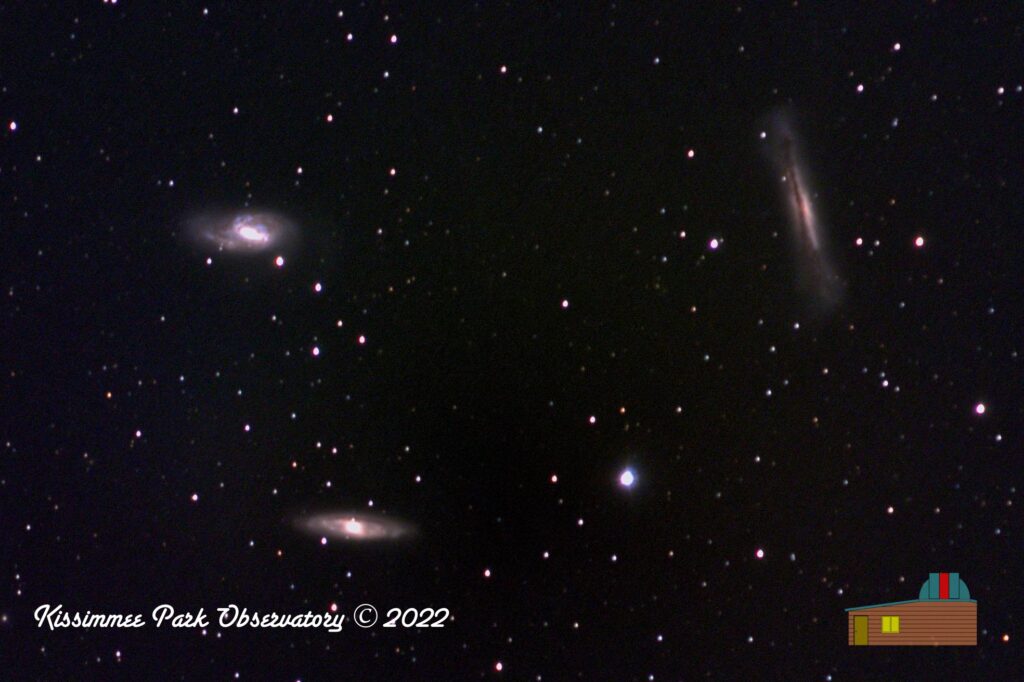The Leo Triplet of Galaxies, otherwise known as “The Trio in Leo” as they are located within the boundaries of the constellation of Leo. This grouping is made up of M65 at top left, M66 lower, and the larger NGC 3628 at the top right in this image. All three of these island universes lie approximately 35 million light years away. These were certainly very ancient photons that were captured in this effort, comprising over 8.5 hours of data.
This is once again a bit small of a target for the current “travel rig” imaging optics (400mm Canon L lens), so these objects should be revisited when the new 14″ RC arrives. However this is a good target for a medium focal length rig, so by cropping the full image a bit it is possible to get some decent object scale. Not quite enough detail in those galaxies though.
I went to a significant effort in processing this image, as there is considerable light pollution encroaching on the KPO site recently due to local sprawl. In the past when I was using my Canon DSLR, I used an Astronomik CLS in-camera filter to cut down on the light pollution. But now when I am imaging in wideband RGB with the CCD system, I have no way to cut the light pollution, so I have to deal with it in post processing. I am sure there is a solution; I clearly need to research this issue. I have recently found some neat tricks in the AstroPixelProcessor app that can remove the majority of the bad sky fog, to allow a final clean up of the image contrast in Aperture.
Tap on the image to see a larger version.
Image Info
- Imaged from the KPO field in Saint Cloud, Florida.
- Camera : ZWO ASI1600MM Pro
- Lens: Canon 100-400 f/5.6L lens, set to 400mm
- Mount: iOptron SmartEQ Pro
- Red: 20 subframes of 300s = 100 min integration
- Green: 22 subframes of 300s = 110 min integration
- Blue: 19 subframes of 300s = 95 min integration
- Luminance: 43 subframes of 300s = 215 min integration
- Total integration time: 520 min = 8.7 hours.
- Captured via ASIAir Pro automation
- Optical tracking via ASIAir automation, currently using ST4 mount control via the ASI120MM-S guide camera
- Separate channels stacked and LRGB integrated in Astro Pixel Processor, and processing for light pollution sky fog removal
- Image cropped, stretched, and noise processed in Nebulosity.
- Final processing in Aperture

